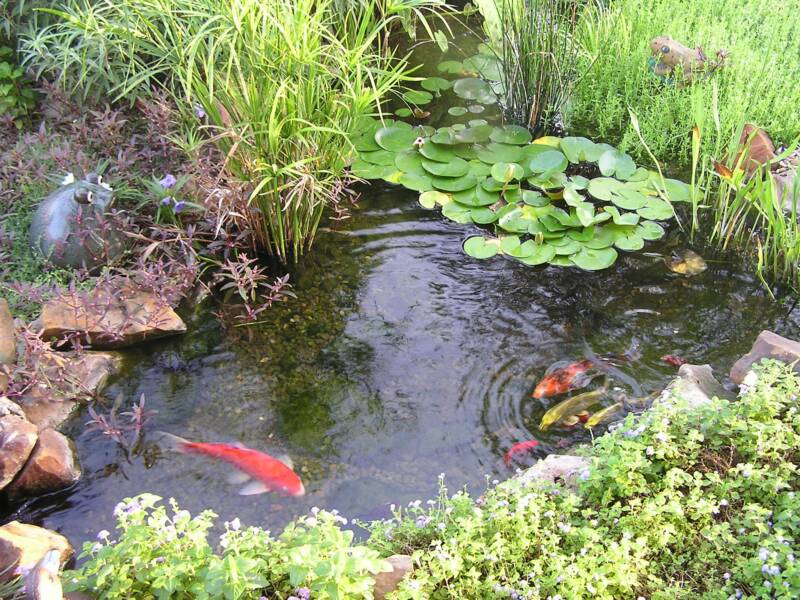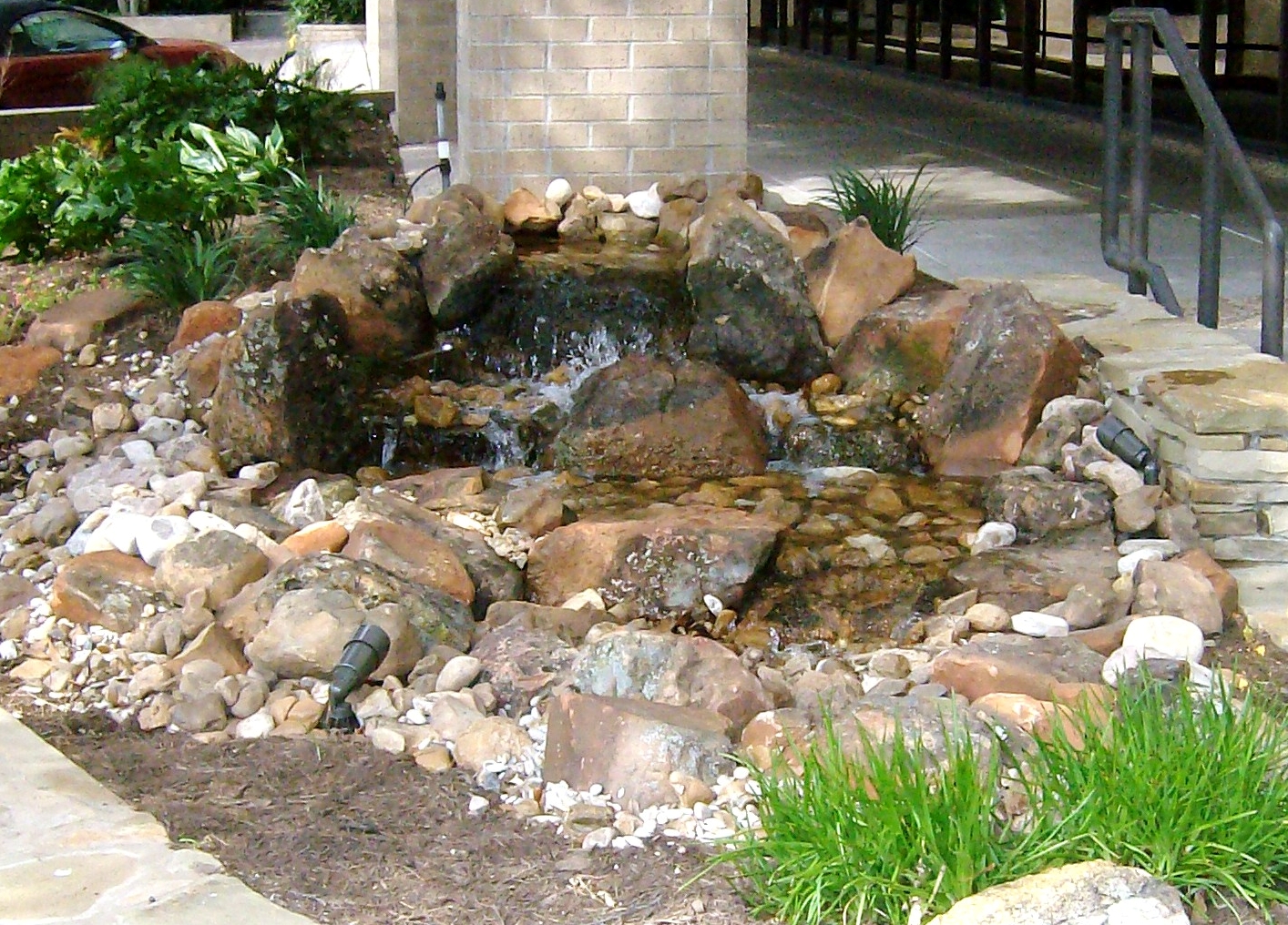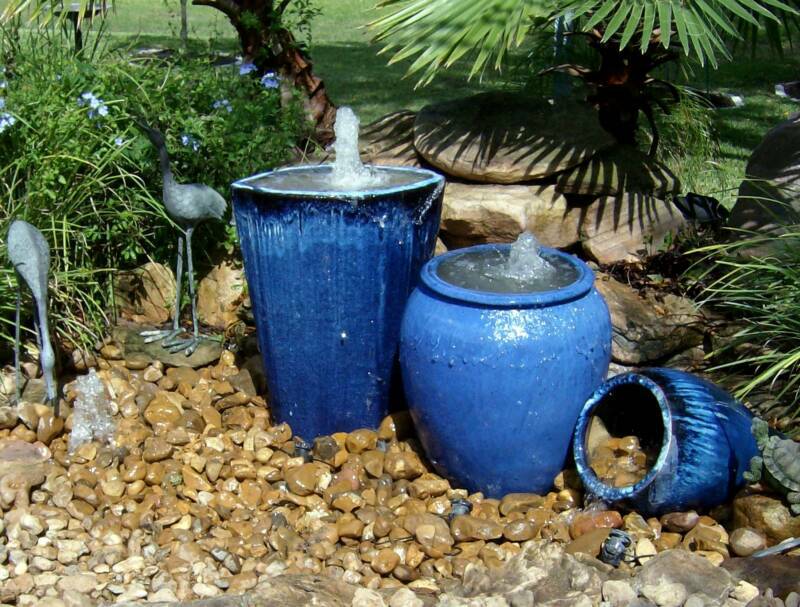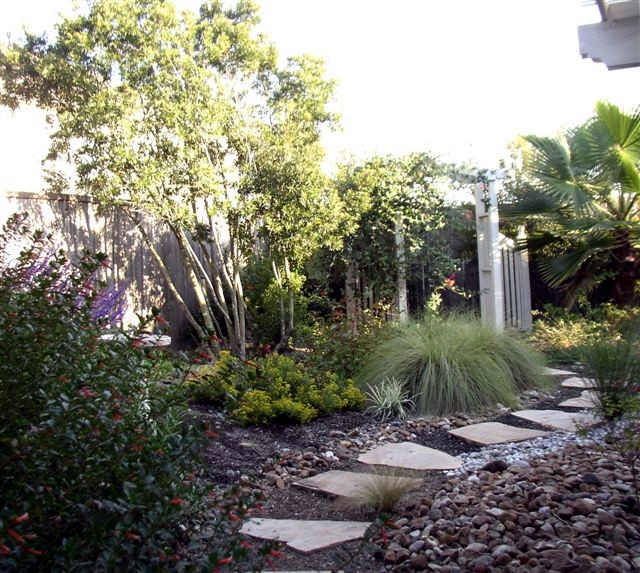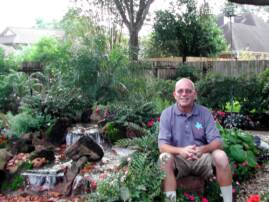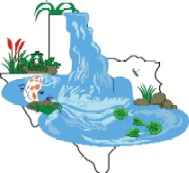


Rainwater Harvesting
Organic Ecosystem Ponds
Pondless Waterfalls
Urn and Fountain Features
Water-Wise Landscapes
Meet Your Water Feature Professionals


Texas Ponds and
Water Features
Going.......... ‘Pond-less’!
by Matt Boring
The Natural Water Gardener
OK, so you’d love the sound of flowing water in your backyard, but you just don’t have the space for a pond. Maybe you’ve already devoted much of your yard to a pool and want to add a natural looking waterfall behind it. Or you’re just not ‘pond people’ but you’d like a waterfall in your yard for the birds to play in and drink from. Perhaps you prefer the organic look of water flowing over natural stone as opposed to the static cold look of a polished rock fountain. You want a natural water feature, but you have toddlers in the house or a baby on the way. Or you want something that looks natural for the front yard water feature. The solution to all these situations could be a ‘pond-less’ water feature. A waterfall or stream or combination of the two can be built so that at the base of the water feature, the moving water disappears magically into the ground.
Pond-less water features still re-circulate water from a reservoir dug at their base, but instead of the reservoir being a pond, this one is dug deeper, filled with rock and graveled over on top so that you can actually walk right out into it and even add plants to it. There’s no water to step or fall into so it’s perfectly safe for toddlers. Birds can splash around in it and your pet can drink from it. And, unlike a pond, you can turn it off when you’re not watching it or when you go on vacation. There’s also no maintenance involved with the pond-less system other than topping off the water level when it evaporates. An automatic fill valve can take care of that little chore for you so it truly becomes a maintenance-free water feature.
The secret to the magic disappearing water trick is that hidden inside the rock and gravel that fill the basin are a couple of pieces known as a micro-Snorkel vault and a micro-Centipede module. The micro-Snorkel houses the pump and check valve and, if you choose, the automatic fill valve. The micro-Centipede module is basically a manifold with large slits in the sides to allow water to reach the pump. These slits provide a way for water to pass without clogging like older homemade systems using PVC pipe with holes drilled in it. The water flows through the flexible pipe up to the top of the waterfall. I use a Biofalls unit to start my waterfall just as if I was building a pond. Once the water flows out of the hidden Biofalls, it passes over the natural stone of the waterfall/stream area and disappears again into the bed of gravel.
Like an organic pond, the pond-less system uses no chemicals to stay clean and clear. The same beneficial bacteria will colonize on the rocks and gravel of the system and eventually starve out excess nutrients that may try to feed an algae bloom. Since it’s all-natural, you can plant bog plants and marginal aquatics within the waterfall or stream itself and also in the bed of gravel to help naturalize the area. Using plants that will grow in or out of water along the edges of your pond-less water feature will help blend the edge of the water feature into the rest of the yard. A nice piece of wood scavenged from a forest becomes a fallen tree, crossing your stream. Add some moss gathered from your backyard or a nearby wooded area in shady, moist (not wet) areas around the waterfall. Where conditions are right for it, it will soon start to spread its soft green carpet, really helping to complete a look of permanence, like this waterfall has been here forever. It’s details like these that can make a nice looking water feature into something really special. Don’t ask me to give you all my secrets, though! Maybe I should write a book.....hmmmm.....
Last year I contacted the city of Rosenberg, TX to inquire about donating a water feature to the city to honor my Grandfather. He had been in the Rosenberg Fire Department for 45 years, including 26 years as its chief. The city agreed and set aside some space for the monument. When I went to look at the space, I was surprised to find that it was in a traffic island in the entrance to one of the city’s parks. There wasn’t going to be enough space for a pond at this location so I decided to install a pond-less system with a small waterfall and a creek, since it was going in Seaborne Creek Park. By the time it was all said and done, a miniature bronze fireman statue and a stone plaque had also been donated and were to be incorporated into the area. The whole thing came together beautifully and I am now a firm believer in the pond-less system although down deep I still prefer watching my fish swim around their pond at the end of the day.
The individual components of the system can be used to help create other types of disappearing water features as well. For instance, you could install the snorkel and centipede units into the rock-filled reservoir. An urn or drilled polished fountain stone can then be installed and surrounded by smooth decorative beach pebbles or polished river rock. The water from these fountains is circulated the same way as the pond-less waterfall, only using smaller pumps. The pumps are still easily accessible through the snorkel vault if you need to change one out and the water never has a problem reaching the pump. These types of fountain are popular in simpler and more formal gardens that aren’t trying to capture the natural look, such as in a Japanese garden.
Almost any garden cries out for moving water. From a simple stream from a bamboo pole in a meditation garden to the overflowing urn in the center of a more formal landscape; from the smallest pond-less waterfall to the largest aquatic landscape full of waterfalls and bridges and streams connecting multiple ponds where there’s no grass at all, the human spirit desires to be around water. There’s something inherent in our nature that draws us to the endless sound of moving water. The sight of water flowing in a landscape will invariably draw people to investigate the area. We can’t help but be drawn to it. Water is the source of all life on our planet and to feel that pull back to that source is only natural.
Happy Pondering!

